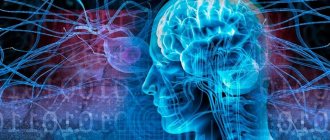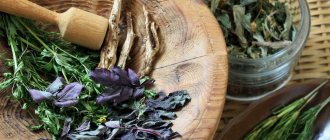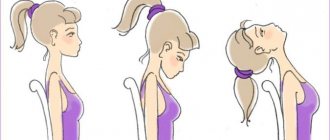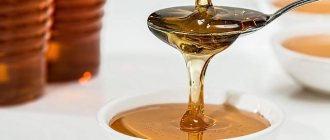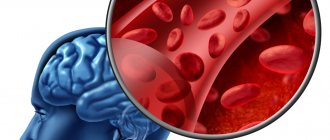Vegetative-vascular dystonia is a symptom complex that is manifested by deviations in the functioning of organs and systems, dysfunction of the autonomic nervous system. A patient with vegetative-vascular dystonia suffers from depression, panic attacks, and neuroses. Dysfunction of the autonomic nervous system develops against the background of somatic or mental illnesses, it affects adolescents during puberty, develops with organic damage to the central nervous system, and often accompanies diseases of the endocrine system, heart, and hypertension.
The Yusupov Hospital offers patients with VSD to undergo examination using modern diagnostic equipment, receive consultation from a neurologist of the highest category, undergo effective treatment in the neurological department, and recovery in the hospital’s rehabilitation center. In the rehabilitation center, patients with VSD will be able to undergo a course of physical therapy, breathing exercises to help relieve panic attacks in a timely manner, massages, and physiotherapeutic procedures. A neurologist will give recommendations on the use of folk remedies of plant origin in the treatment of vegetative-vascular dystonia.
Folk remedies for vegetative-vascular dystonia
Folk remedies for VSD are used depending on the clinical syndrome, but do not replace medications prescribed by a doctor. The doctor selects drugs based on the symptoms of the disease, the severity of the disease and the individual sensitivity of the patient’s body to the drugs. The following herbs or infusions from them are used as folk remedies for treatment of vegetative-vascular dystonia:
- motherwort;
- hawthorn;
- valerian;
- peppermint;
- rose hip;
- nettle;
- St. John's wort;
- hops and other herbs.
Folk remedies are used at home to prevent the development of panic attacks and anxiety. The doctor may also prescribe herbal preparations to eliminate symptoms of depression and neuroses.
Principles of treating VSD with folk remedies
Before you start treating vegetative-vascular dystonia at home, pay attention to several important points.
Modern medicine recognizes herbal medicine as a completely scientific method. Doctors and pharmacists have accumulated considerable experience in working with herbal raw materials. In addition, the effect of any drug is individual: what helps one person may not work for another. Therefore, you should not trust the reviews of friends praising this or that method - first consult a doctor.
It is important to continue treatment for a long time, completing the entire course. This is due to the fact that herbal preparations are not potent, and, therefore, their effect is noticeable after a long period of use.
With such a syndrome, the following physiotherapeutic methods are very helpful: breathing exercises, yoga and meditation, outdoor exercise, since they do an excellent job of restoring the nervous system and the emotional sphere of life.
Cardiac type dystonia therapy
This form is characterized by the appearance of complaints about cardiac activity. Patients experience chest pain, arrhythmias, and shortness of breath. In such a case, the following herbal infusions work very well:
- a mixture of valerian root, watch leaves, mint, sweet clover, fennel berries in a ratio of 2:2:1:1:1. Pour boiling water (300 ml) into 8 g of dry herbs, heat in a water bath and leave for 2 hours. Drink 100 ml three times a day after meals;
- tea made from lemon balm leaves, speedwell, violet, lavender flowers, barberry berries. The ingredients are taken in equal proportions, prepared as a regular brewed drink and taken two hours before bedtime.
Hypertensive variant
The cause of the condition is increased activity of the sympathetic division of the autonomic nervous system. Patients complain of increased blood pressure, rapid pulse, emotional excitability, and headache.
In addition to taking medications, it is very important to reduce your salt intake and adhere to a low-calorie diet. Herbal therapy lasts at least four months and includes:
- horsetail, sweet clover, mint leaves, mistletoe, valerian root are mixed in equal parts. Pour boiling water (200 ml) into 6 g of the mixture and leave in a water bath for half an hour. Then leave for about another hour. Take 4 times a day, 50 ml;
- two tablespoons of fennel, cumin, motherwort (in equal parts) are poured with a glass of boiling water and left for 45 minutes. Drink 50 ml three times a day;
- is good for lowering blood pressure . Pour a tablespoon of hot water into a glass and leave in a water bath for 20 minutes. Take 25 ml infusion 3 times a day. For the same purpose, use a tincture of alcohol (a tablespoon three times a day);
- Freshly squeezed juices of beets, grapes, and cucumbers are very useful
Hypotonic type
The symptom complex is characterized by a high tone of the parasympathetic nervous system, in which low blood pressure and a low pulse rate are observed. The patient experiences sweating and dizziness.
In such cases, great importance is attached to physical motor mode. It is necessary to activate the body with the help of morning exercises, washing and dousing with cold water, and playing sports. In the hypotonic variant, stimulating herbs for vegetative-vascular dystonia are used, which are called adaptogens:
- Eleutherococcus;
- ginseng;
- Schisandra chinensis.
Tinctures, tablets and other forms of these plants are sold in pharmacies. The course of treatment is at least two weeks.
The following folk remedies are also used for hypotonic VSD:
- Rhodiola rosea root (100 g) is infused in 500 ml of vodka for a week. Then take 10 drops (diluted in water) of the extract every day. In the same way, a tincture is made from the roots of Leuzea and gorse.
- Strengthening tea made from angelica and St. John's wort. The herb is brewed in a ratio of 1 to 10 and used twice a day.
Help with neurological and mixed types
This form of VSD is associated with a disorder of not only the autonomic, but also the central nervous system. It is characterized by pressure drops, weakness, periodic increased excitability, frequent vegetative crises, and panic attacks.
Naturally, such lability requires a special approach. It is necessary to prescribe medications that eliminate the disturbed psycho-emotional balance: antidepressants, antipsychotics and others.
In practice, the following folk remedies are used to treat VSD in neurological and mixed variants:
- A mixture (8 g) of equal parts of adonis leaves, mint, St. John's wort, shepherd's purse, wild rosemary, lingonberry, rose petals is poured into 300 ml of boiling water and left in a water bath for 15 minutes, then another hour in a warm place. The infusion is consumed before meals three times a day.
- In the same way, a mixture is prepared from hawthorn berries, dill seeds, sweet clover herb, horsetail, verbena, and fireweed leaves. Take 100 ml three times a day.
- Herbal collection of calendula flowers, motherwort herb, valerian roots, caraway seeds and dill. Prepare a decoction (tbsp per 250 ml), drink 25 ml 4 times a day.
Herbs for VSD
Herbs for vegetative-vascular dystonia are not a panacea; severe forms of VSD cannot be treated with herbs; symptoms can be relieved with the help of stronger drugs. Herbs help well with mild symptoms of vegetative-vascular dystonia. Vegetative-vascular dystonia differs in clinical symptoms:
- cardiac type - this type of VSD is characterized by increased heart rate, anxiety, increased blood pressure, and prolonged pain of varying intensity in the heart area;
- tachycardial type - this type of VSD is characterized by increased blood pressure, redness of the face, increased heart rate, and a sensation of blood surges in the vessels of the temples;
- the hypertensive type is characterized by a limited increase in blood pressure, which does not exceed 170/95 (mm Hg);
- hypotonic type is characterized by a short-term drop in blood pressure, increased sweating, weakness, and poor circulation in the extremities;
- the visceral type is accompanied by frequent and severe pain in the abdominal area, bloating, and very often the patient develops constipation or diarrhea;
- asthenic type - this type of VSD is characterized by constant fatigue, decreased endurance, increased body temperature, trembling hands;
- the respiratory type is characterized by disturbances in the respiratory system, the patient often yawns, breathing is difficult, and pressing pain develops in the chest area. Very often the patient feels a “lump” in his throat and is tormented by a dry cough;
- the mixed form combines various symptoms of different types of VSD.
Depending on the symptoms, you should take decoctions and infusions of medicinal herbs. VSD is characterized by the onset of sudden attacks, panic attacks, during which the heartbeat increases, blood pressure rises or falls, and begins to shiver. To prevent such attacks, to quickly relieve an attack, infusions of valerian, hawthorn, mint and other herbs are used. Herbal infusions (St. John's wort, mint, chamomile and other types of herbs) are recommended to improve digestion for visceral-type dystonics; herbal infusions (valerian, thyme, hawthorn, motherwort, etc.) are formulated for hypertensive and hypotensive patients, heart patients. Common to all dystonics is a collection of soothing herbs. Depending on the type of VSD, it is recommended to change your diet, avoid stress, spend more time in the fresh air, and do physical therapy and breathing exercises. Swimming and yoga classes help dystonics well.
Additional recommendations
A complete cure for vegetative vascular dystonia is possible only in cases where the patient learns to properly manage his emotions and be in harmony with himself.
Frequent walks in the fresh air, swimming, and yoga are reliable helpers for restoring the nervous system and bringing the body to a calm state. Lead a measured lifestyle, subject it to a regime at least for a while. Give up bad habits, create your own traditions and rituals - regular tea drinking, an aroma lamp with healthy oils, reading a book before bed or keeping a diary. Gradually, day by day, the body will return to normal and the disease will recede forever.
Is it possible to use hawthorn for VSD?
Hawthorn has properties that help cope with the symptoms of VSD: it lowers blood pressure, heart rate, dilates blood vessels, and has a sedative effect. It is rich in vitamins and minerals, contains vitamins A, E, K, C, trace elements calcium, zinc, magnesium, iron, potassium. Tinctures for VSD from hawthorn have a strengthening effect on the heart, relieve attacks of anxiety, improve sleep, reduce blood pressure, and stop tachycardia. It is not recommended to take hawthorn fruit on an empty stomach - it can cause cramps. You should not eat a lot of it at one time - it can cause poisoning. It is not recommended to take hawthorn for dystonics with low blood pressure and slow pulse.
Herbs can be harmful if self-medicated. Before using herbs, you should consult a neurologist and follow all his recommendations. At the clinic, a patient with VSD will be able to undergo a full examination, treatment of concomitant diseases, and rehabilitation. You can make an appointment with a doctor by calling the Yusupov Hospital.
Causes of vegetative-vascular dystonia
It is difficult to say what provokes VSD, since doctors have not been able to establish the exact cause. We can only highlight the factors that provoke it:
- previous traumatic brain injury;
- drug use, alcohol use, smoking;
- diseases of the endocrine system;
- sedentary/inactive lifestyle;
- constant emotional stress, frequent stressful situations;
- chronic lack of sleep;
- diseases of the cervical spine;
- diseases of the central nervous system.
The main reason for the development of VSD is considered to be a decrease in cerebral vascular tone, which leads to the inability to control the narrowing and expansion of the arteries of the autonomic nervous system. Most often, VSD is diagnosed in adolescents, during hormonal changes in the body, when the nervous system is most weakened.
Diagnostics
As already mentioned, VSD is a diagnosis of exclusion. Therefore, to diagnose it, all additional methods are needed that will exclude organic pathology. A general examination of the patient is needed, consultation with a neurologist, cardiologist, gastroenterologist and endocrinologist.
A complete cardiac examination is carried out: laboratory tests, cholesterol, ECG, ultrasound of the heart, exercise tests, Holter ECT and blood pressure. Also prescribed are x-rays of the chest organs, ultrasound of the abdominal organs, kidneys and thyroid gland, fibrogastroscopy, colonoscopy for gastrointestinal complaints. The level of thyroid hormones is determined, since its pathology is accompanied by similar symptoms.
If no pathology is found during all additional examinations, then the patient is diagnosed with vegetative-vascular dystonia in accordance with:
- leading clinical syndrome (cardiac, hypotonic, hypertensive, respiratory, asthenic, neurotic, mixed variant of the course);
- degree of severity – mild (3-6 complaints and symptoms), moderate (8-16 signs), severe (more than 17 signs and frequent crises);
- phase of the disease (exacerbation or remission).
Treatment of vegetative-vascular dystonia
In the case of the described disorder, the treatment regimen for vegetative-vascular dystonia in women and men must be comprehensive, long-term, and take into account the characteristics of the dysfunctions, the etiological factor and the individual specifics of the person. If this disorder is advanced, therapeutic measures will be lengthy.
So, how to get rid of vegetative-vascular dystonia in adults? As a rule, treatment measures involve the use of non-drug regimens, which can be supplemented with sedatives.
Non-drug therapeutic measures for the treatment of vegetative-vascular dystonia in women and men include:
- Optimization of periods of work and rest. In order to get rid of the symptoms of VSD, you should evenly alternate between mental and physical labor, and minimize the time spent in front of a computer monitor and TV. If this is not possible, take a break every 60-90 minutes, do gymnastics for the eyes, and warm up for the back.
- Maintaining a stable daily routine with mandatory proper rest. The normal duration of night sleep varies from person to person. But for most, this figure should not be less than 8-9 hours. Sleeping conditions are also important. The bedroom should not be stuffy; regular ventilation and wet cleaning are necessary. The bed should be comfortable and suitable for the person’s height and build. It is better to give preference to an orthopedic mattress and pillow.
- A diet that includes foods rich in potassium and magnesium. It is these minerals that are involved in the transmission of impulses in nerve endings, improve the activity of the heart and blood vessels, and restore balance in the functioning of the nervous system. Therefore, for VSD, it is recommended to consume buckwheat and oatmeal, legumes, dried fruits, nuts, herbs, potatoes, carrots and eggplants.
- Adequate physical activity. The optimal activities are those that take place in the fresh air or in the water, but do not put a significant strain on the muscular and cardiovascular systems. Swimming, water aerobics, dancing, skiing and cycling are most suitable for a patient suffering from vegetative-vascular dystonia. With such loads, gentle training of the heart occurs and the psycho-emotional state is normalized. At the same time, you should avoid sports that require sudden movements, high jumps, or staying in static tension for a long time. This creates additional stress on the vessels and can lead to worsening of the disease.
- Acupuncture and massage promote relaxation, eliminate anxiety, normalize blood pressure, and restore sleep. For the hypertensive type, massage movements are indicated at a slow pace with increased impact on the collar area. With a hypotonic variant of VSD, on the contrary, the massage should be fast and intense.
- The use of herbal preparations. For VSD with increased blood pressure, herbs with sedative and hypotensive effects (tincture of valerian, peony, motherwort) are suitable. The hypotonic variant of the disease requires taking drugs with a stimulating and activating effect (eleutherococcus, aralia, ginseng).
- Physiotherapy methods have a positive effect in vegetative-vascular dystonia due to the normalization of the interaction of various parts of the nervous system and vascular tone. Such procedures improve blood circulation in organs and tissues and activate metabolic processes. The list of techniques used is quite large: electrophoresis with medicinal solutions on the cervical spine, ozokerite or paraffin applications on the collar area, laser irradiation in combination with magnetotherapy. Water procedures have an excellent effect. For all types of VSD, contrast baths, circular and fan showers, underwater massage, and swimming are recommended.
- For hypotonic type VSD, it is necessary to consume foods that increase vascular tone: green tea, natural coffee, milk. In case of hypertensive variant of the disease, foods that provoke a rise in blood pressure should be excluded from the diet: strong tea and coffee, pickles and spicy dishes.
When diagnosing vegetative-vascular dystonia, drugs are prescribed exclusively by the attending physician. The therapeutic effect is focused on restoring balance in the functioning of the ganglion system.
